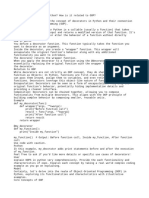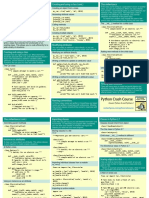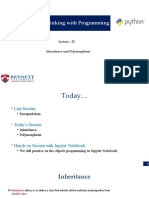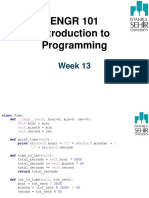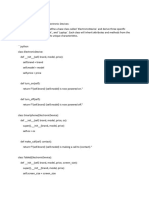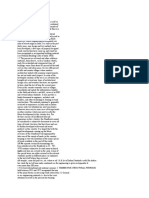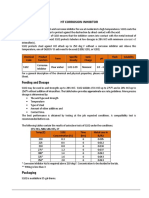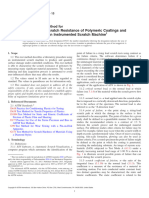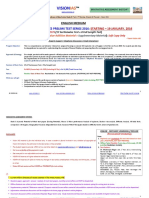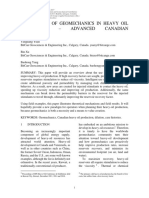0% found this document useful (0 votes)
10 views3 pagesInheritance
This document is a Python lab focused on Object-Oriented Programming (OOP) concepts, including classes, objects, methods, inheritance, and polymorphism. It provides step-by-step tasks to create a Car class, add attributes and methods, implement inheritance with an ElectricCar subclass, and demonstrate polymorphism through method overriding. Each step includes code examples and outputs to illustrate the concepts effectively.
Uploaded by
tr0ffic.netw0rkCopyright
© © All Rights Reserved
We take content rights seriously. If you suspect this is your content, claim it here.
Available Formats
Download as PDF, TXT or read online on Scribd
0% found this document useful (0 votes)
10 views3 pagesInheritance
This document is a Python lab focused on Object-Oriented Programming (OOP) concepts, including classes, objects, methods, inheritance, and polymorphism. It provides step-by-step tasks to create a Car class, add attributes and methods, implement inheritance with an ElectricCar subclass, and demonstrate polymorphism through method overriding. Each step includes code examples and outputs to illustrate the concepts effectively.
Uploaded by
tr0ffic.netw0rkCopyright
© © All Rights Reserved
We take content rights seriously. If you suspect this is your content, claim it here.
Available Formats
Download as PDF, TXT or read online on Scribd
/ 3


















